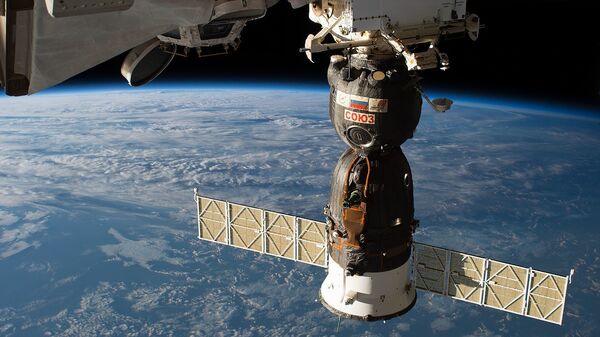“The following scheme is planned for now: two NASA astronauts will remain on the ISS for nine months instead of the usual six. So, Nick Hague starts his mission on March 14 [2019] on the Soyuz MS-12 and returns to Earth on 18 December on the Soyuz MS-13, while Andrew Morgan will travel to the orbital station on Soyuz MS-13 on 6 July and will return on Soyuz MS-15 in April 2020", the source said.
According to the source, this will allow NASA to have at least one astronaut in the US segment of the station to maintain it and, therefore, to have a plan B in case of the delay in the start of regular flights of new US manned spacecraft.
"In other words, the dependence of the American side on the Russian Soyuz spacecraft is extended from December 2019 to April 2020", the source added.
READ MORE: MYSTERY as NASA's 'WALL-E' and 'EVE' Go Silent After Passing Mars
Last year, Russia's Soyuz MS-09 spacecraft attracted international attention after the International Space Station's crew detected a minor air leak caused by a microfracture on a wall of the orbital module of the ship. Energia has since introduced video surveillance at all stages of the construction of Soyuz spacecraft.
READ MORE: Roscosmos, Academy of Sciences: Necessary to Prepare Lawyers for Moon Disputes
Roscosmos chief Dmitry Rogozin said in January that Russian State Space Corporation mulls adopting a new development strategy in order to regain its position as leader in the global space industry.


